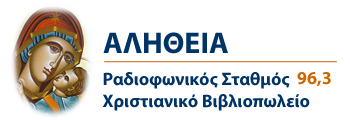Metropolitan Nicholas (Hatzinikolaou) of Mesogaia and Lavreotiki, the
Church of Greece:
I remember my understanding of Mt. Athos when I was a simple pilgrim.
Or, I might even say, I came to the Holy Mountain as a tourist. Of course, I
was looking for something, but my inner search had no specific goal. As the
Athonites say: a person does not need much—a spoon, a plate, minimal
clothing—but the most necessary thing in life is a goal! At the time I had a
lot in my life, but the purpose was somewhat unclear. I really liked the nature
and the way of life on Mt. Athos. And I found its people appealing too—they
were different.
Before 1968, life on Mt. Athos was declining, buildings were crumbling,
and monks of advanced age were living out their days. It seemed that the glory
of the Holy Mountain was already in the past. When the millennium of cenobetic
monastic community on Mt. Athos was celebrated in 1963, one of the dignitaries
put it bluntly: “We have probably come here to bury Mt. Athos.”
But soon a miracle occurred, and after five years Mt. Athos was
unrecognizable. There were considerably more young monks than old ones there.
Ascetic life attained new heights. Of course, this was largely thanks to such
elders as Joseph the Hesychast, who trained many disciples.
When Greece joined the EU in 1981, funds were allocated for the
reconstruction of Mt. Athos. This prevented most of the old buildings from
turning into heaps of rubble. But it had a negative impact on the spirit of the
Holy Mountain! Roads were laid everywhere as cars had to transport construction
materials. Noise and dust began to disturb the solitude and the life of prayer.
In accordance with the EU instructions, buildings of a certain level of comfort
were constructed on Mt. Athos, bringing an element of comfort and even luxury,
which had previously been unheard of in the monastic republic. For monks those
circumstances provoked new temptations because the monastic life in poverty has
always been regarded as a blessing of God. Cenobitic monasteries may have
benefited from that reconstruction program to some extent, but the eremitic
life suffered greatly from the innovations.
But, despite everything, Mt. Athos is a place of continuous, unceasing
prayer. Here the grace of God is constantly manifested in the holiness of
individual monks and in secret signs.
We know that all the major biblical events happened on the tops of
mountains: on Mount Sinai humanity received the Ten Commandments, on Mt. Tabor
the Transfiguration of the Son of God took place, and Christ ascended to Heaven
from the Mount of Olives. And Mt. Athos is (spiritually) the highest point of
the earth.
There are four main principles of the organization of life on Mt. Athos.
Firstly, this is anchoretic life, because monastic life on Mt. Athos is,
first of all, asceticism and hesychasm. Here even the rules of cenobitic
monasteries are much stricter than in other places of the globe.
Secondly, its self-administration, since Bishops do not govern Mt.
Athos—they could only interfere here because the Holy Mountain is under the
jurisdiction of the Patriarch of Constantinople, and more importantly, the Most
Holy Theotokos Herself governs it.
Thirdly, its universal nature, since Mt. Athos is a universal phenomenon
on earth. It is neither “Russian”, nor “Greek”, etc. But it unites everyone.
There are the Russian St. Panteleimon’s Monastery, the Serbian Hilandar
Monastery, the Bulgarian Zographou Monastery… Out of the twelve sketes two are
Romanian, and there are representatives of very many nationalities among the
brethren of all of its monasteries.
And, fourthly, the religious rule of Avaton is enforced by law on Mt.
Athos. Women are banned the entry onto its territory. I believe that it should
also forbid access by television and those curious individuals as I myself was
in my time.
Prepared by Olga Orlova
Translated from the Russian version by Dmitry Lapa
Pravoslavie.ru
7/19/2021













Δεν υπάρχουν σχόλια:
Δημοσίευση σχολίου